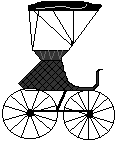 |
The Last Livery |  |
This is the first installment of information about Muskegon from the
Greater Muskegon Historic Association. This project has been worked
on for the last two years by the association and is one
of two major projects the association has spearheaded, the other
being the Indian Cemetery. Secretary of the Association and the author
of this article, Patricia Kay Montney and Board Member, Tammy
Huston tell me-"The Stables are on the corner of Clay and Sixth
and the state of Michigan has it listed as one of the last Livery stables.
We would like to see the stables
totally restored to the way it looked like in the beginning including
a wooden sidewalk."
From Pat-
Here is the story on the stable. I have kept it short. I am in the process of writing a book on the stable. The first paragraph is the start of my book and the title is the name of book. The proceeds from this book will be used for historic preservation. The stables has been my pet project for more than two years. My files are thick. A point you may find interesting is that this property had nine lumber barons involved with it. Also, although it has been written that George Roberts had the stable built, it actually was Lyman G. Mason.
Pat
The Hole
By: Patricia Kay Montney
Secretary of Greater Muskegon Historic Association
Down in a sleepy little hollow, nestled in on a corner lot within the historic district of Clay Avenue, stands the remnants of the last livery stable of Muskegon’s bygone lumbering era. Amidst our bustling city, obscure from view, sits a small Chicago bricks building, reminding us of simpler time, when horses and carriages roamed the streets. A time when livery stables were common and the blacksmith's hammer could be heard near and far. When Muskegon was known as the’ World’ s Lumber Queen’ with streets paved with sawdust and brick. An era when locals would dub it ‘The Hole.'
Between 1857 and 1862 lumber baron Lyman G. Mason had the livery stable with a second floor living quarters erected. A man with much forethought and a head of his time. In a time went most of Muskegon's structures were wooden, with fires being prevalent and little organized efforts to fight them. Mason sought to build structures on his property, that would be more fireproof. Bricks were imported from Chicago and the modern architecture of the day was used.
By 1862, George Roberts, another lumber baron would purchase the property and the rest of the block from Mason. He would hold his lumbering business office in the building in front of the stable and hire John B. McCracken to run the dry goods store on the corner. In subsequent years, McCracken would become owner and through a will, the property would be held in trust until 1923. During this period William Nanninga a blacksmith would lease the livery stable for his business and lived there for a number of years.
The long established business of Muskegon Transfer Company would purchase the property, which they least for numerous years from the Michigan Trust Company and livery stable in 1927. A lease agreement would continue with William Nanninga until 1948. During which, horses would be housed at the stable from the city. The last of which, was Daisy, who plowed the sidewalks of downtown during the winter.
For over thirty years this property has been in controversy with
one group or
another and the city wanting to save it, with the owner left
out of the
picture. Today the last livery stable for the state of
Michigan is in the
hands of the court. It fate now left for final judgment.
Copyright © 2000 by Patricia Kay Montney and the
Greater Muskegon Historic Association.
All rights reserved.